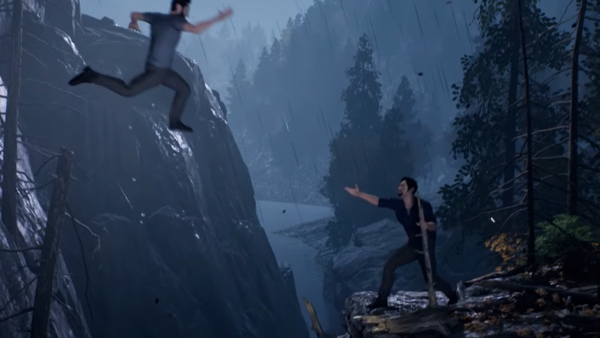A Way Out Could Be The Split-Screen Revolution We've Been Waiting For
It can't just be a one-off.

With every new generation of consoles, the video game industry has seemingly moved further away from split-screen and local multiplayer. The days of hunkering down with friends to race each other on Crash Team Racing - or even battle through offline matches of Call of Duty 4 - feel like nothing more than a distant memory in 2018.
Which is a shame, because while the move towards online has made playing with other real human beings far easier, it shouldn't completely supplant the ability for two people to play together on the same couch. It makes sense from a business perspective, as publishers will benefit by making it so that every player needs to have bought their own individual copy of a game to buddy up, but not only is getting rid of split-screen frustrating for fans who don't want the accessibility of their purchases limited, but by moving away from the feature, devs are also fundamentally limiting what video games can do as an artform.

In fact, Hazelight Studios' recent offering, the split-screen only A Way Out, proves just what this visual style can bring to video games from a narrative, gameplay, and presentation standpoint. The developers played around with this visual motif of course, and there isn't just a vertical divide down the TV for the whole six-hour runtime. Instead it constantly shifts, dynamically expanding and shrinking depending on the focus of a scene, drawing attention to important elements and highlighting specific characters when necessary.
Except for a handful of key moments, the game never takes control away from players, which means that during major emotional character moments which isolate either protagonist, Leo or Vincent, the other will always be present and controllable on-screen, even if they're packed right into the corner. This fluidity when it comes to the presentation awards the game with a cinematic look, and certainly makes scenes more striking and dynamic than they otherwise might have been (even giving it a comic-book edge in some sequences), but it works even better on a narrative and gameplay level.
Because you're always in control of your chosen character, to the point where you're encouraged to continue indulging in activities while your partner is watching a story-heavy scene involving their avatar across 80% of the screen, the devs imbue you with a deeper connection to them without sacrificing the power of the narrative. You still get to see what's happening, but it always feels like it's being viewed from the perspective of whoever you're playing as, rather than the omniscient camera capturing everything as it would in a film.